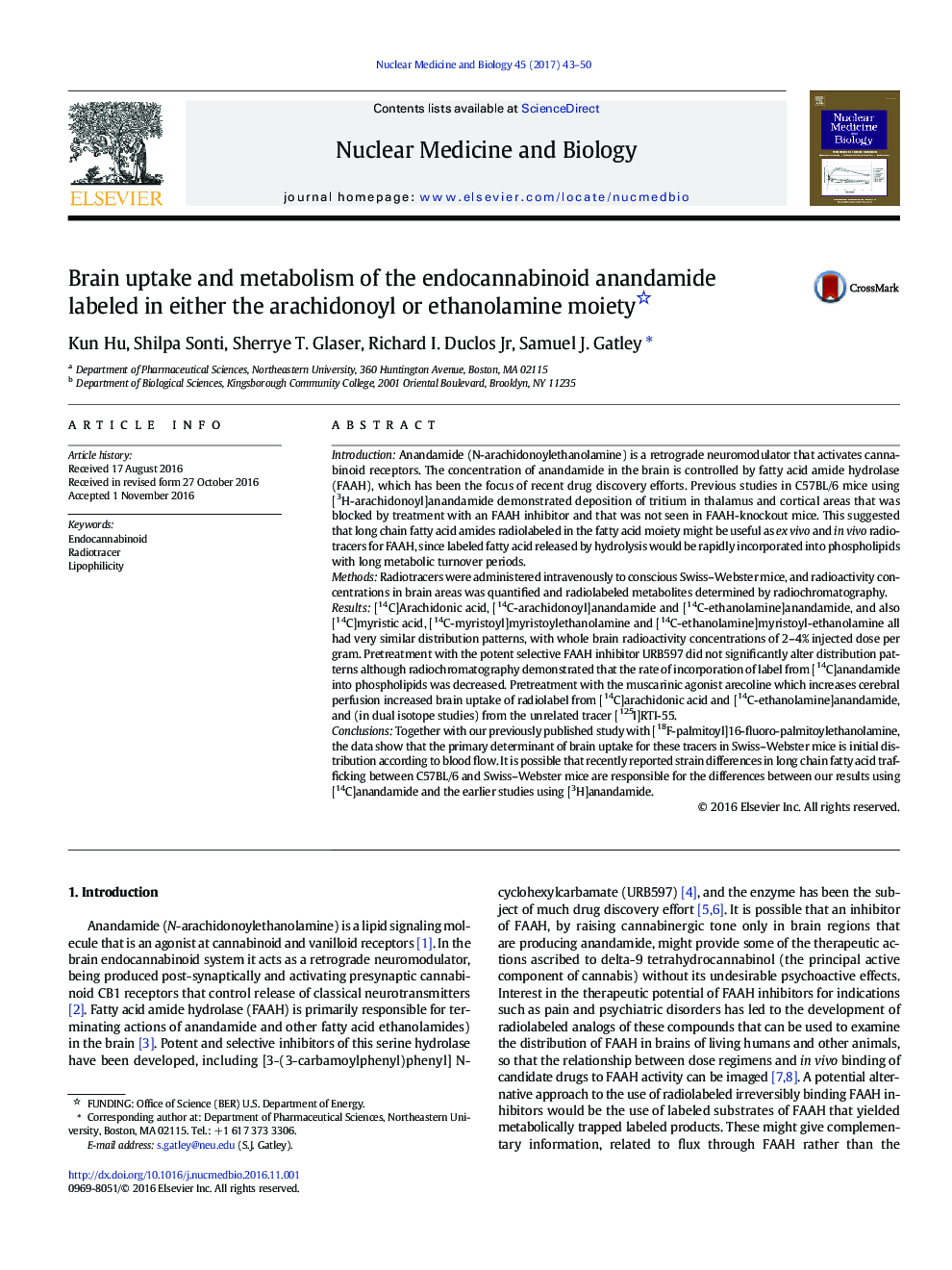| کد مقاله | کد نشریه | سال انتشار | مقاله انگلیسی | نسخه تمام متن |
|---|---|---|---|---|
| 5529099 | 1548832 | 2017 | 8 صفحه PDF | دانلود رایگان |

IntroductionAnandamide (N-arachidonoylethanolamine) is a retrograde neuromodulator that activates cannabinoid receptors. The concentration of anandamide in the brain is controlled by fatty acid amide hydrolase (FAAH), which has been the focus of recent drug discovery efforts. Previous studies in C57BL/6 mice using [3H-arachidonoyl]anandamide demonstrated deposition of tritium in thalamus and cortical areas that was blocked by treatment with an FAAH inhibitor and that was not seen in FAAH-knockout mice. This suggested that long chain fatty acid amides radiolabeled in the fatty acid moiety might be useful as ex vivo and in vivo radiotracers for FAAH, since labeled fatty acid released by hydrolysis would be rapidly incorporated into phospholipids with long metabolic turnover periods.MethodsRadiotracers were administered intravenously to conscious Swiss-Webster mice, and radioactivity concentrations in brain areas was quantified and radiolabeled metabolites determined by radiochromatography.Results[14C]Arachidonic acid, [14C-arachidonoyl]anandamide and [14C-ethanolamine]anandamide, and also [14C]myristic acid, [14C-myristoyl]myristoylethanolamine and [14C-ethanolamine]myristoyl-ethanolamine all had very similar distribution patterns, with whole brain radioactivity concentrations of 2-4% injected dose per gram. Pretreatment with the potent selective FAAH inhibitor URB597 did not significantly alter distribution patterns although radiochromatography demonstrated that the rate of incorporation of label from [14C]anandamide into phospholipids was decreased. Pretreatment with the muscarinic agonist arecoline which increases cerebral perfusion increased brain uptake of radiolabel from [14C]arachidonic acid and [14C-ethanolamine]anandamide, and (in dual isotope studies) from the unrelated tracer [125I]RTI-55.ConclusionsTogether with our previously published study with [18F-palmitoyl]16-fluoro-palmitoylethanolamine, the data show that the primary determinant of brain uptake for these tracers in Swiss-Webster mice is initial distribution according to blood flow. It is possible that recently reported strain differences in long chain fatty acid trafficking between C57BL/6 and Swiss-Webster mice are responsible for the differences between our results using [14C]anandamide and the earlier studies using [3H]anandamide.
Journal: Nuclear Medicine and Biology - Volume 45, February 2017, Pages 43-50